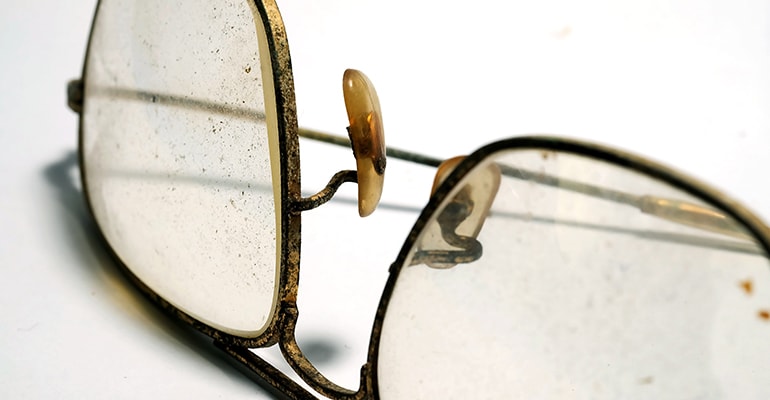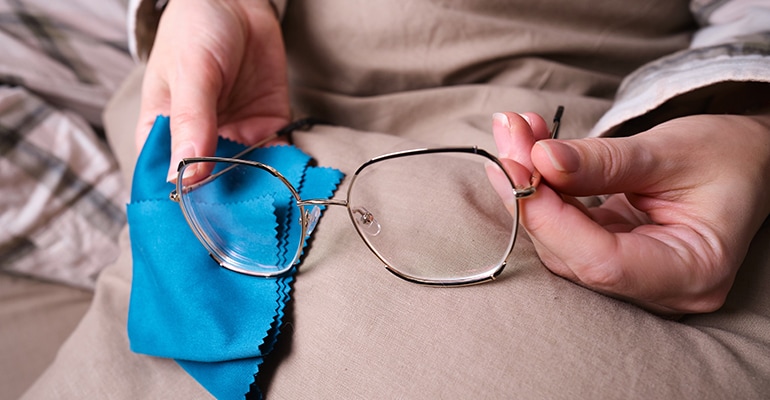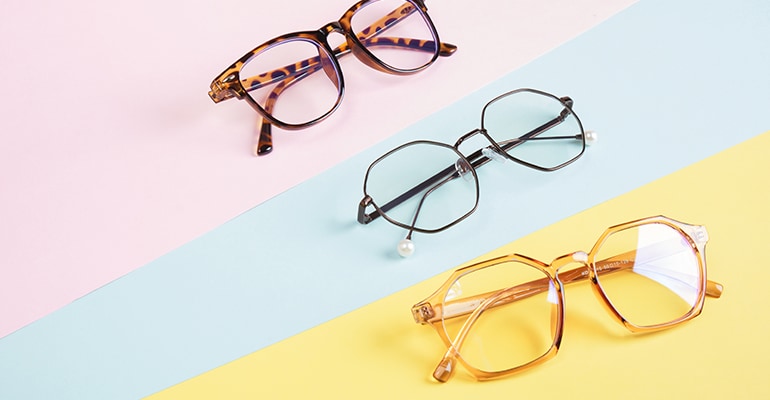Glasses Nosepiece Turns Green
May 21, 2023
Glasses Nosepiece Turns Green
Many people will suddenly notice that the nosepiece of their eyeglasses has turned green after using them for a period of time. Some people will choose to ignore it and continue to use their eyeglasses. Others will think that the glasses are moldy and need to replace them with a new one. So, does this situation need to be brought to our attention or not?
What is the Green Dirt on the Nose Bridge?
The metal core of the eyeglass nosepiece is generally made of copper. After a long time of wearing glasses, your sweat erodes the nosepiece, and a chemical reaction occurs to produce green dirt called patina. The patina is green and dirty, and of course there may be some nickel compounds in it.
Why do Eyeglass Nosepieces Turn Green?
The nosepiece is an important part of the eyewear frame, which plays a supporting role, and most of them are made of PVC. The green dirt on the nose rest is produced by the oxidation of your sweat and the metal material. Glasses are generally worn for a period of time, the nosepiece and the inner groove of the nosepiece will be prone to rust and turn green.
Is the Patina on the Nosepiece Harmful?
Firstly, patina looks unsightly and dirty. Secondly, pure patina contains bacteria, which can affect the skin, but is not particularly harmful. However, if it contains other substances, it may be hard to determine. Qualified eyeglasses are made of alloys that do not exceed the standard for lead and nickel, but low-end cheap eyeglasses may contain environmentally friendly alloys. Under this situation, then it will be harmful to the human body.

How Should You Clean the Patina on the Nose Rest?
1. Unscrew the small screw and wipe it carefully with a soft paper towel.
2. Wipe your eyeglasses with 75% medical alcohol and an eyewear cloth.

3. Some people say you can use white vinegar to scrub it clean. However, if you use acid or alkaline substances, the patina will appear faster and more often.
4 . Go to an optical store regularly for professional care. Eyeglass stores can use ultrasonic cleaners for cleaning, which is usually free of charge. Be sure to screw all the screws again after ultrasonic cleaning, because ultrasonic shock can loosen the screws.
5. Go directly to the optician to change a nosepiece, which is usually also free of charge.
6. After cleaning, it is advisable for you to apply some oily substance (such as nail polish) for protection, which can prevent the reappearance of patina.
How to Avoid the Patina on the Nosepiece?
1. When choosing your eyewear frame, it is essential to pay attention to the material of the eyewear frame. If you choose a plastic eyewear frame without a metal nosepiece, you can avoid this problem.
2. If you want to choose a metal eyewear frame with a metal nosepiece, it is recommended to choose a titanium eyewear frame and avoid a copper alloy eyewear frame. Because the copper alloy eyewear frame is inevitable to produce green rust for a long time.
3. Periodically you can use ultrasonic cleaning, but it is not recommended to clean too often.

FAQ's about the Patina on the Nosepiece of Eyeglasses
-
What kind of eyeglasses whose nosepieces are more likely to turn green for a long time?
Copper alloy eyewear frames are the most widely sold metal eyewear frames on the market, and they are sought after by many consumers for their cheapness and variety of styles.
However, it is this eyewear frame that is most prone to rust. Because the patina is green. If you look closely, you will find that not only the nosepiece has a patina, other places are also more or less a little. The disadvantages of copper alloy eyewear frames: heavy, easy to deform, easy to break, easy to lose paint, easy to rust.
-
What material of eyeglasses whose nosepieces are not likely to turn green?
Glasses made of non-metal will not rust and will be lighter and more comfortable. If you are likely to choose metal eyeglasses frames to add a style of fashion and vintage, then it is recommended that you ask the optician to put a clear plastic cover on the outside of the feet of the eyeglasses, which will reduce the damage to the skin and eyeglasses.